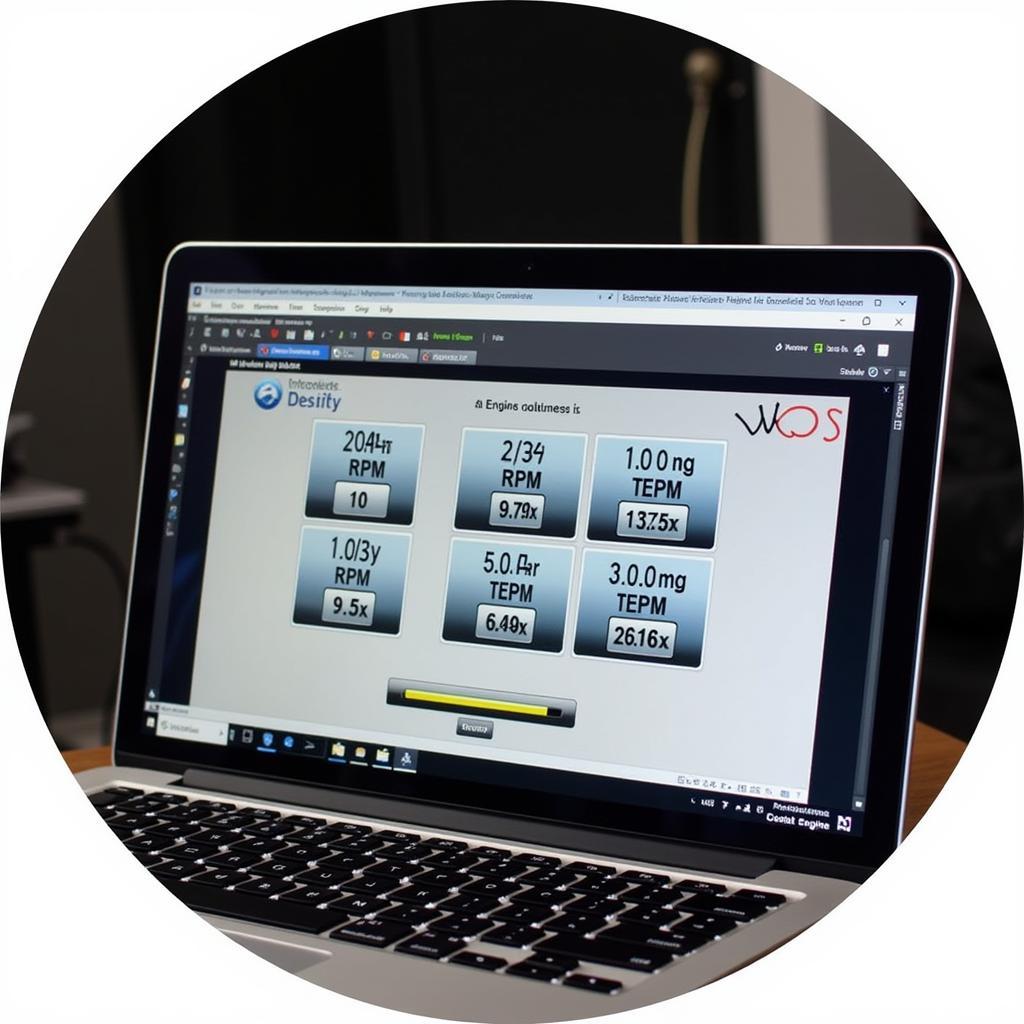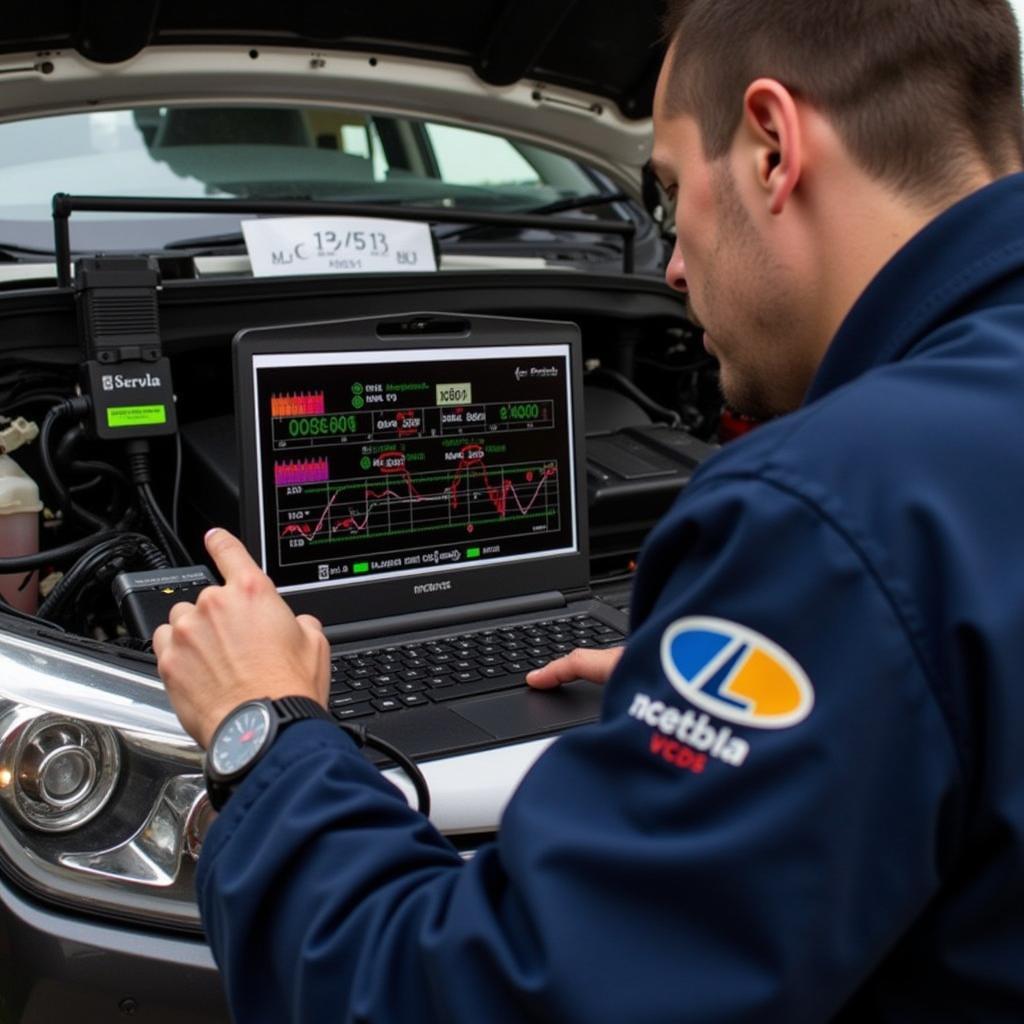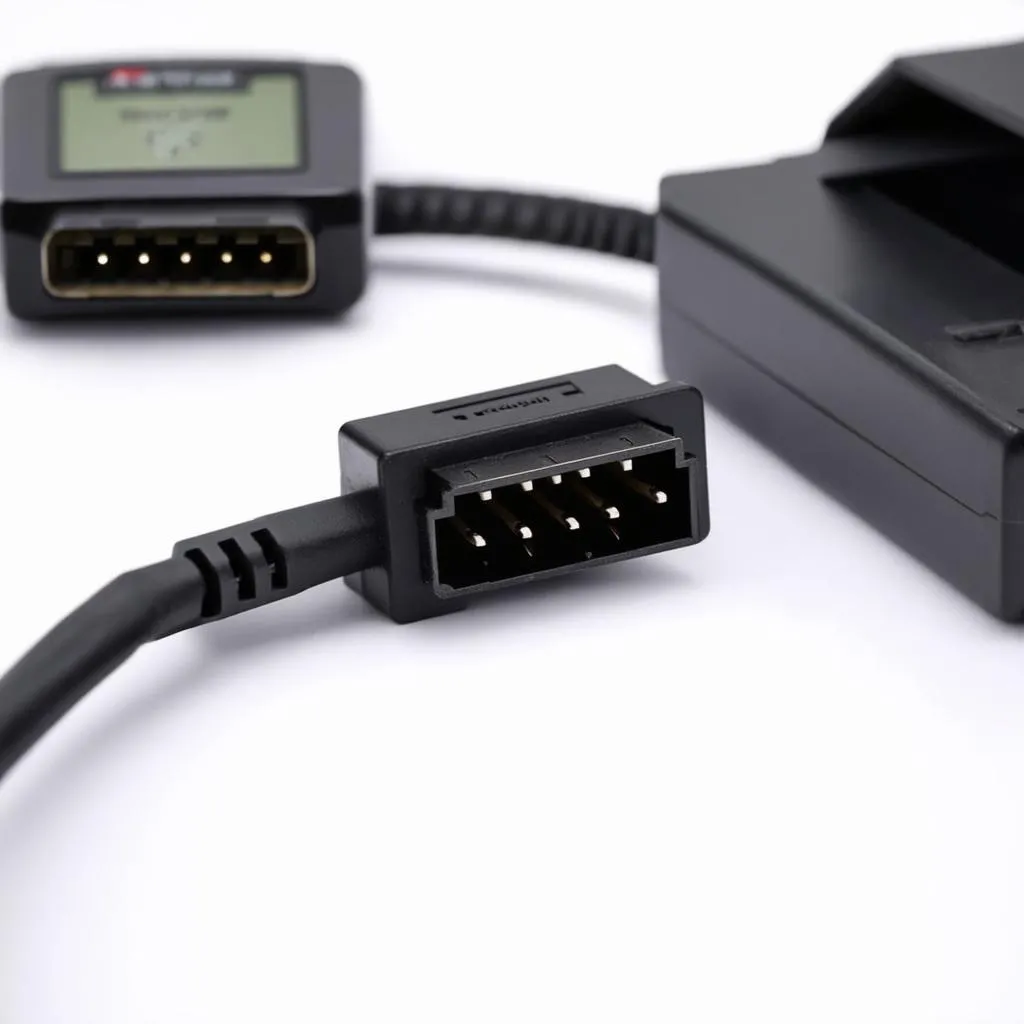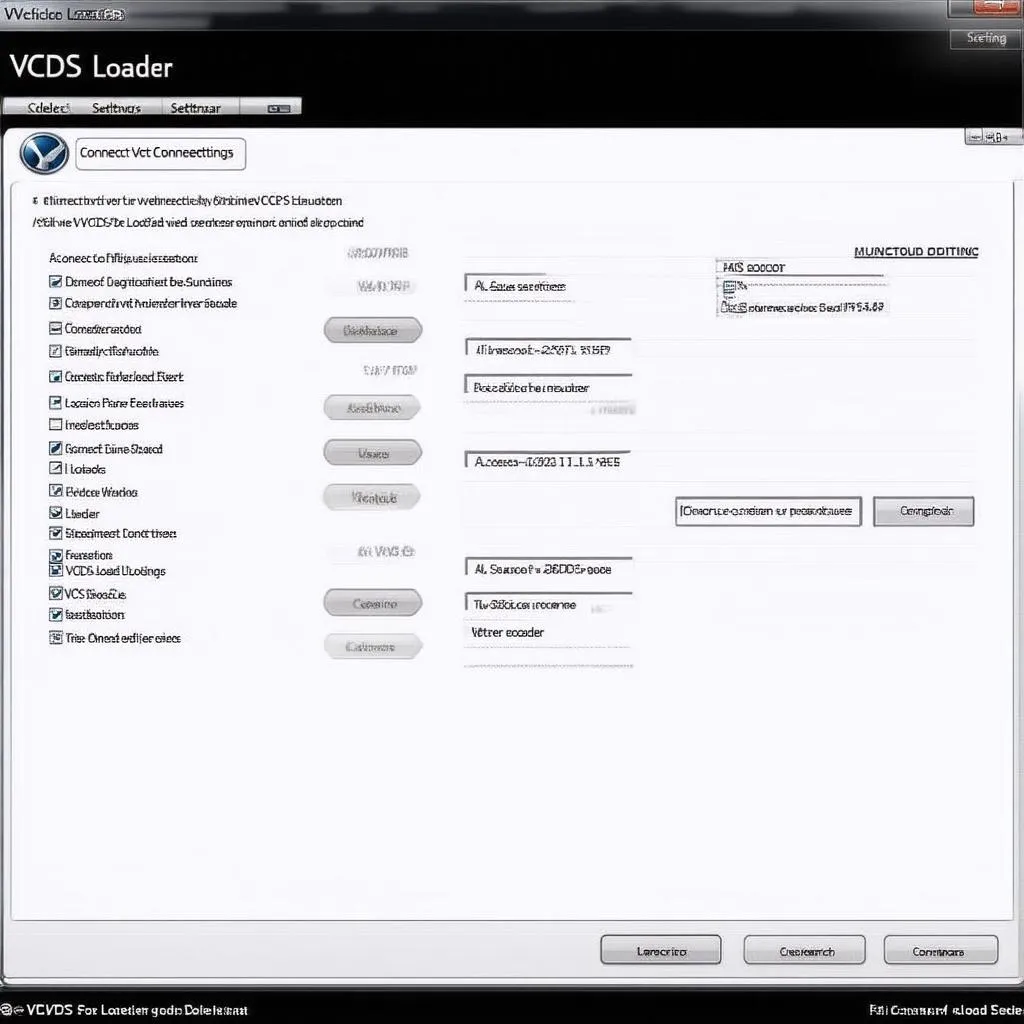Understanding VCDS engine measuring blocks is crucial for accurate diagnostics and effective repairs. These blocks provide real-time data about your engine’s performance, allowing you to pinpoint issues with precision. Whether you’re a seasoned mechanic or a DIY enthusiast, this guide will equip you with the knowledge to interpret these valuable data points.
Decoding the Secrets of VCDS Engine Measuring Blocks
VCDS, or VAG-COM Diagnostic System, is a powerful tool that grants access to the inner workings of Volkswagen, Audi, Seat, and Skoda vehicles. At its core are the engine measuring blocks, numerical representations of various engine parameters. These blocks, also known as measuring groups, offer a window into the engine’s real-time status, from fuel pressure and injection timing to boost pressure and exhaust gas temperature. By understanding these values, you can effectively diagnose and address a wide array of engine problems.
 VCDS Engine Measuring Blocks Display on a Laptop
VCDS Engine Measuring Blocks Display on a Laptop
What Can You Learn from VCDS Engine Measuring Blocks?
VCDS engine measuring blocks provide invaluable insights into the health and performance of your engine. They allow you to monitor critical parameters, identify deviations from normal operating ranges, and pinpoint the root cause of malfunctions. Here are some key areas where these blocks prove particularly useful:
-
Fuel System: Analyze fuel pressure, injection timing, and injector duty cycle to diagnose issues like fuel pump failures, clogged injectors, or incorrect fuel mixture. You can find more information about checking fuel pressure with VCDS by visiting our page on vcds fuel pressure measuring block.
-
Ignition System: Monitor ignition timing, misfires, and knock sensor activity to identify problems with spark plugs, ignition coils, or other ignition components.
-
Air Intake System: Analyze intake air temperature, mass airflow, and boost pressure to diagnose issues with the air filter, turbocharger, or intercooler.
-
Exhaust System: Monitor exhaust gas temperature, oxygen sensor readings, and particulate filter status to diagnose issues with the catalytic converter, oxygen sensors, or particulate filter. Knowing the vcds cost can help you decide if investing in this tool is worthwhile.
-
Cooling System: Monitor coolant temperature and fan operation to diagnose issues with the thermostat, water pump, or radiator fan.
 Using VCDS Measuring Blocks to Identify Engine Issues
Using VCDS Measuring Blocks to Identify Engine Issues
How to Access and Interpret VCDS Engine Measuring Blocks
Accessing the engine measuring blocks is straightforward. After connecting the VCDS interface to your vehicle’s OBD-II port and launching the software, select the “Engine” control module. Then, navigate to the “Measuring Blocks” or “Advanced Measuring Values” function. Each block is assigned a group number, and within each group are multiple data points represented by numerical values.
“Understanding the specific parameters within each block requires referring to the factory repair manual for your specific vehicle model,” advises John Miller, a seasoned automotive diagnostician with over 20 years of experience. “These manuals provide detailed explanations of each measuring block and the expected values for optimal engine performance.” Similar to checking your timing belt, which you can learn about through our vcds timing belt check guide, utilizing the correct measuring blocks is essential.
Interpreting the data requires comparing the actual readings with the expected values. Significant deviations often indicate a problem. For instance, unusually low fuel pressure could point to a failing fuel pump, while excessively high coolant temperature could signal a thermostat malfunction.
Troubleshooting Common Issues Using VCDS Engine Measuring Blocks
VCDS engine measuring blocks are invaluable for troubleshooting a variety of engine issues. For instance, if the engine is misfiring, you can check the misfire counter in the relevant measuring block to pinpoint the affected cylinder. Similarly, if the engine is lacking power, you can monitor the boost pressure to determine if the turbocharger is functioning correctly. You can also learn how to check glow plugs with vcds. Knowing more about vcds software can also enhance your diagnostic capabilities.
Conclusion: Unlocking the Power of VCDS Engine Measuring Blocks
Mastering VCDS engine measuring blocks empowers you to diagnose and repair engine issues with unprecedented precision. By understanding these valuable data points, you can identify problems early on, avoid costly repairs, and ensure optimal engine performance.
FAQ
- What are VCDS engine measuring blocks? They are groups of data points providing real-time information about engine parameters.
- Why are measuring blocks important? They allow for accurate diagnosis of engine problems.
- How do I access measuring blocks? Through the VCDS software after connecting the interface to the car’s OBD-II port.
- Where can I find the meaning of each block? Consult your vehicle’s factory repair manual.
- What should I do if a value is outside the normal range? Investigate the potential issue indicated by the deviation.
- Can I use VCDS on any car? VCDS is primarily designed for VAG vehicles (Volkswagen, Audi, Seat, Skoda).
- How much does VCDS cost? You can find information on pricing on our vcds cost page.
Need further assistance? Contact us via Whatsapp: +1 (641) 206-8880, Email: CARDIAGTECH[email protected] or visit us at 276 Reock St, City of Orange, NJ 07050, United States. Our customer service team is available 24/7.


